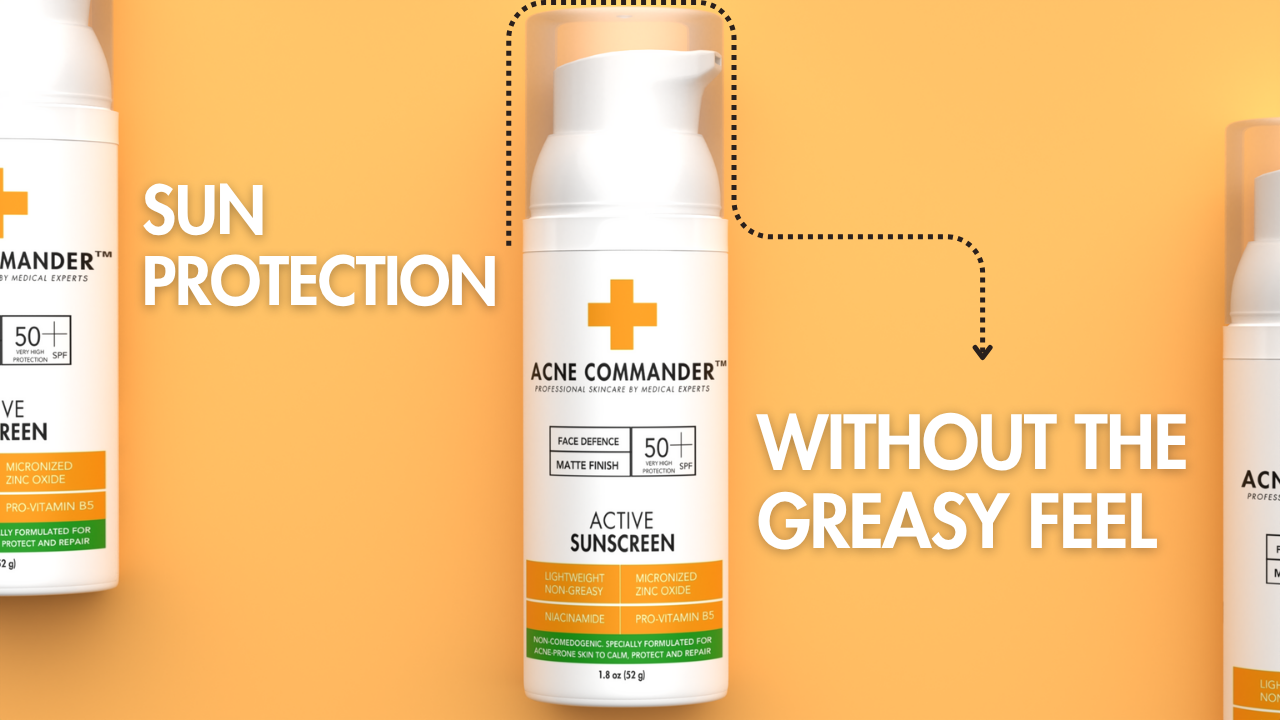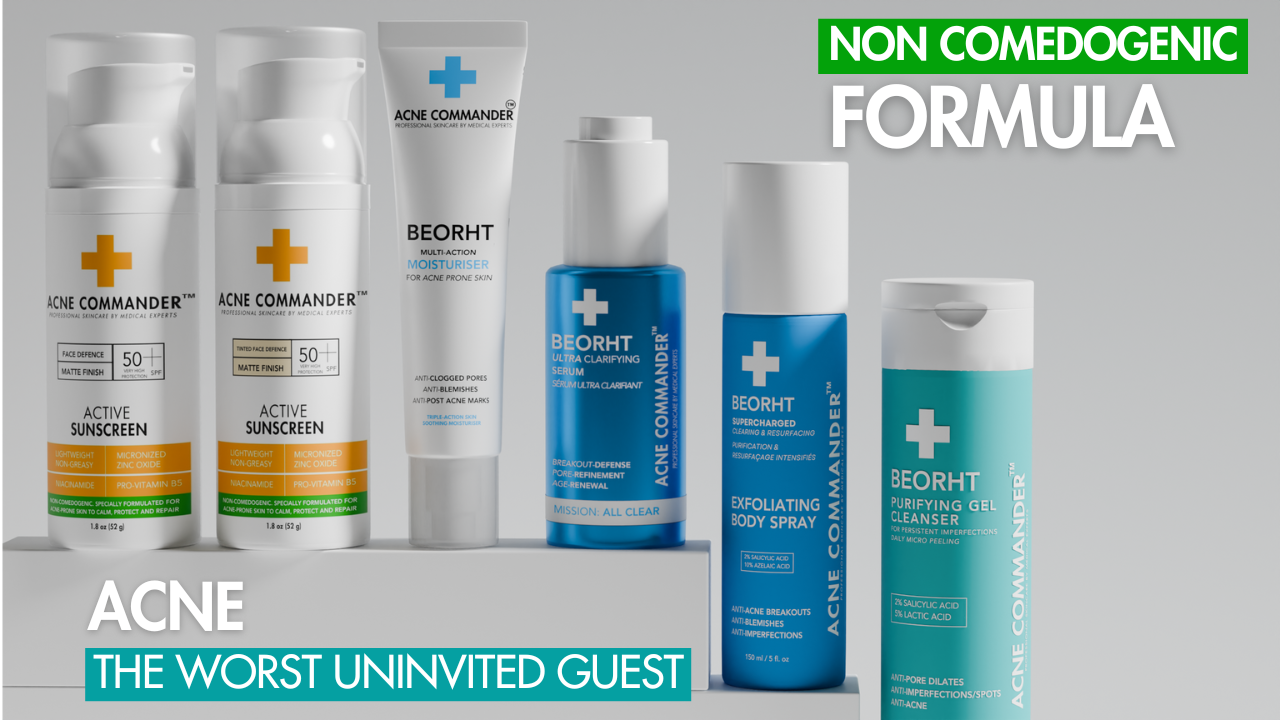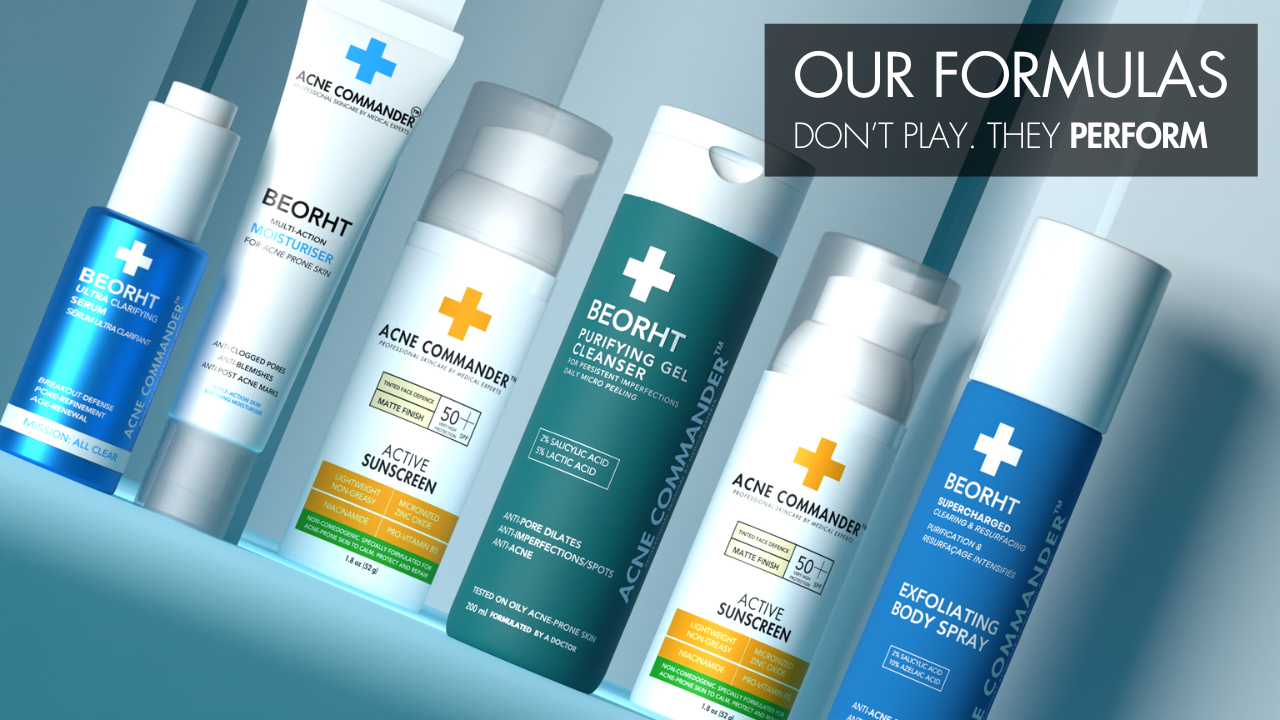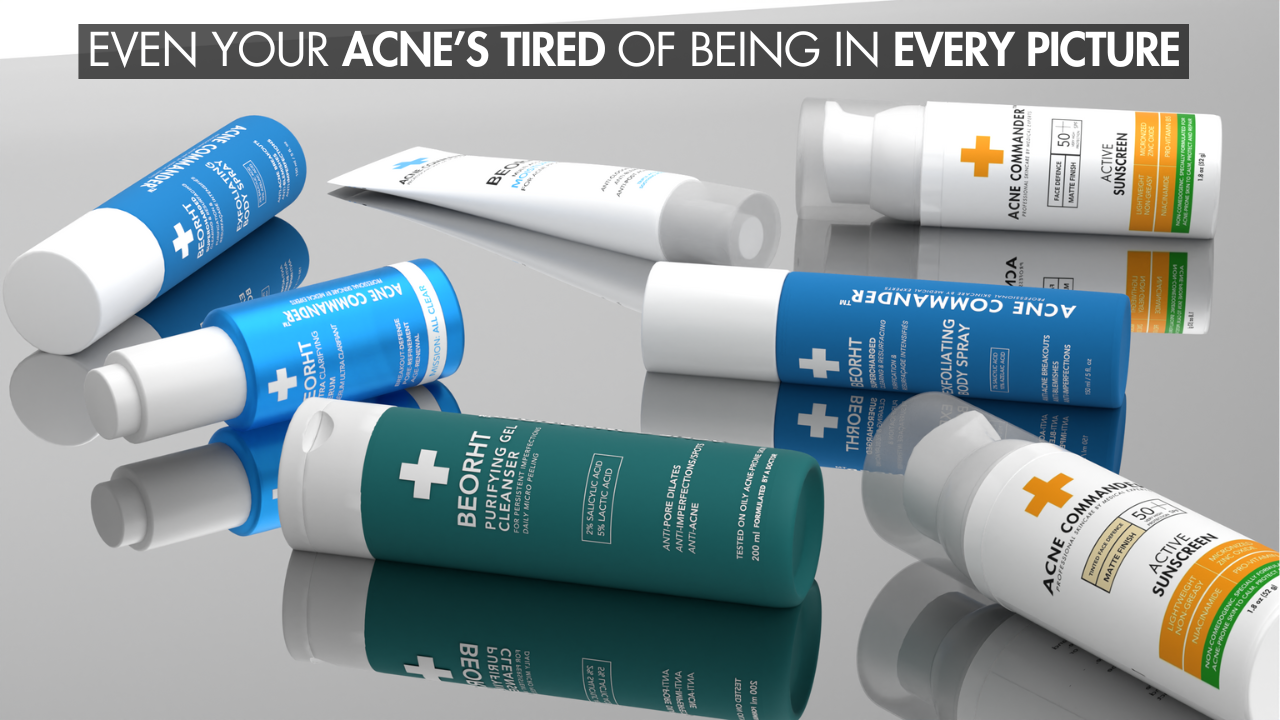Introduction
For individuals with acne-prone skin, choosing the right cleanser is crucial for managing breakouts and maintaining a healthy complexion. One of the most important aspects to consider is whether the product is non-comedogenic. But what exactly makes a cleanser non-comedogenic, and why does it matter for acne treatment?
A non-comedogenic cleanser is a product formulated in such a way that it doesn’t clog pores. Clogged pores are one of the leading causes of acne, as they trap oil, dead skin cells, and bacteria, leading to inflammation and breakouts. Non-comedogenic products are specifically designed to prevent this buildup, making them ideal for individuals with acne-prone or oily skin.
What Does Non-Comedogenic Mean?
The term non-comedogenic refers to a product’s ability to prevent the formation of comedones, which are the blockages that lead to acne. A comedone is the medical term for a clogged pore, which can either be a blackhead (open comedone) or a whitehead (closed comedone). These blockages occur when oil, dead skin cells, and other debris build up inside the pores, preventing the skin from breathing and leading to acne.
Non-comedogenic products are specifically formulated to avoid clogging pores. They use lightweight and non-pore-clogging ingredients that don’t contribute to the buildup of oils or debris in the pores, thereby preventing acne breakouts.
Key Factors That Make a Cleanser Non-Comedogenic
Several factors contribute to a cleanser being labeled as non-comedogenic. These factors are based on the ingredients used in the formulation and the way the product interacts with the skin. Below are the key factors that make a cleanser non-comedogenic:
1. Lightweight and Oil-Free Formulation
One of the primary aspects of a non-comedogenic cleanser is its ability to be lightweight and oil-free. Heavy oils, like coconut oil and olive oil, are more likely to clog pores because they contain high levels of oleic acid, which can contribute to acne formation. Non-comedogenic cleansers often use water-based formulations or light oils like jojoba oil, which is similar to the skin’s natural sebum and is less likely to clog pores.
Examples of non-comedogenic oils: Jojoba oil, grapeseed oil, and sunflower oil.
Example of oils that can clog pores: Coconut oil, avocado oil, and olive oil.
2. Exfoliating Ingredients
Non-comedogenic cleansers often contain gentle exfoliating ingredients like Salicylic Acid (a BHA), Glycolic Acid (an AHA), or enzymatic exfoliants that help break down the buildup of dead skin cells. Dead skin cells that accumulate on the surface of the skin can clog pores and contribute to acne. Exfoliating ingredients help to shed these cells, allowing the skin to renew itself and keeping the pores clear.
Salicylic Acid is particularly effective for acne-prone skin because it penetrates deep into the pores to break down oil and dead skin cells, preventing clogged pores.
3. Avoidance of Comedogenic Ingredients
To create a non-comedogenic cleanser, it’s essential to avoid ingredients known to clog pores. These ingredients are typically more heavy, waxy, or greasy, and they contribute to pore blockages, leading to the development of acne.
Some common comedogenic ingredients to avoid include:
-
Petrolatum (petroleum jelly)
-
Lanolin (derived from wool fat)
-
Isopropyl Myristate (a thickening agent)
-
Oleic Acid (found in many oils like coconut and avocado oil)
-
Dimethicone (a type of silicone that can clog pores in certain formulations)
A non-comedogenic cleanser will carefully choose ingredients that are known to be gentle on the skin and won’t lead to pore blockages.
4. pH-Balanced Formula
Maintaining the pH balance of the skin is another important factor that makes a cleanser non-comedogenic. The skin’s natural pH is slightly acidic, typically around 4.5 to 5.5. Using a cleanser with a pH that’s too high (alkaline) can disrupt the skin's natural barrier, making it more prone to irritation and inflammation. This can lead to overproduction of oil, which can clog pores and trigger acne.
Non-comedogenic cleansers are formulated with a pH-balanced formula that maintains the skin’s natural acidity, helping to keep it clear and balanced.
How Non-Comedogenic Cleansers Help Treat Acne
Non-comedogenic cleansers are especially effective for acne treatment because they target the root causes of acne while maintaining a healthy skin balance. Here’s how these cleansers work to treat acne:
1. Prevents Clogged Pores
The main cause of acne is clogged pores. Non-comedogenic cleansers are designed to prevent clogged pores by using light, non-pore-clogging ingredients that clean the skin deeply without causing blockages. By keeping the pores clear, non-comedogenic cleansers help prevent acne breakouts.
2. Controls Excess Oil Production
Oily skin is more prone to acne because excess oil can mix with dead skin cells and clog pores. Non-comedogenic cleansers often include ingredients like Salicylic Acid or Witch Hazel, which help to control excess oil production without stripping the skin of its natural moisture. By balancing oil levels, these cleansers help keep acne under control.
3. Reduces Inflammation and Redness
Inflammation is a key component of acne. Non-comedogenic cleansers often contain soothing ingredients like Niacinamide, Aloe Vera, or Chamomile to reduce the redness and swelling associated with acne. These ingredients help calm irritated skin, reduce inflammation, and promote faster healing of acne lesions.
4. Exfoliates Dead Skin Cells
Non-comedogenic cleansers often include exfoliating ingredients like Salicylic Acid or Glycolic Acid to remove dead skin cells from the surface of the skin. This exfoliation helps to prevent clogged pores and promotes smoother, clearer skin. By removing dead skin cells, these cleansers also help fade acne scars and improve skin texture.
5. Hydrates and Protects the Skin
Non-comedogenic cleansers are designed to cleanse the skin without stripping it of its natural oils. They often contain hydrating ingredients like glycerin or hyaluronic acid, which help keep the skin hydrated and prevent dryness. Maintaining proper hydration is important for preventing the overproduction of oil, which can contribute to acne.
Beorht Purifying Gel Cleanser: A Great Non-Comedogenic Option for Acne-Prone Skin
If you’re looking for a non-comedogenic cleanser that effectively treats acne, Acne Commander’s Beorht Purifying Gel Cleanser is an excellent choice. Here’s why it works so well for acne-prone skin:
Salicylic Acid 2%: Salicylic Acid is a BHA that penetrates deep into the pores to break down oil and dead skin cells, preventing clogged pores and acne.
Lactic Acid 5%: Lactic Acid gently exfoliates the skin’s surface, improving texture and helping to fade acne scars over time.
Non-Comedogenic Formula: Beorht Purifying Gel Cleanser is specifically designed to be non-comedogenic, meaning it won’t clog pores or contribute to acne.
Soothing Plant Extracts: Scutellaria Baicalensis Root Extract and Sophora Angustifolia Root Extract help reduce inflammation and calm irritated skin.
Hydrating Ingredients: Sodium PCA and Butylene Glycol help maintain hydration, preventing dryness and irritation.
Explore detailed information for Acne Commander's Beorht Purifying Gel Cleanser. Click Here
FAQ
Q1: What does non-comedogenic mean?
Non-comedogenic means a product is formulated in a way that won’t clog pores. It helps prevent acne by ensuring the product doesn’t contribute to the buildup of oil and debris in the pores.
Q2: What makes a cleanser non-comedogenic?
Non-comedogenic cleansers are typically oil-free, lightweight, and contain ingredients that don’t clog pores. They often avoid comedogenic ingredients like Petrolatum, Lanolin, and Isopropyl Myristate.
Q3: Why is a non-comedogenic cleanser important for acne-prone skin?
Non-comedogenic cleansers prevent clogged pores, which is the primary cause of acne. They help keep the skin clean without contributing to oil buildup or breakouts.
Q4: Can non-comedogenic cleansers help with acne scars?
While non-comedogenic cleansers help prevent new acne breakouts, additional treatments like Vitamin C or Retinol are often needed to target and fade acne scars.
Q5: Can I use a non-comedogenic cleanser if I have sensitive skin?
Yes, non-comedogenic cleansers are often formulated with soothing ingredients like Niacinamide and Aloe Vera, making them suitable for sensitive skin.
Q6: How often should I use a non-comedogenic cleanser for acne?
Use a non-comedogenic cleanser twice a day, once in the morning and once at night. This helps keep the skin clean and free from impurities without over-drying it.
Q7: Can non-comedogenic cleansers help with oily skin?
Yes, non-comedogenic cleansers are perfect for oily skin because they control excess oil production while keeping the skin clean and hydrated.
Q8: Does Beorht Purifying Gel Cleanser help with acne?
Yes, Beorht Purifying Gel Cleanser contains Salicylic Acid and Lactic Acid, which help treat acne by clearing clogged pores, reducing inflammation, and promoting smoother skin.
Q9: Are non-comedogenic cleansers suitable for dry skin?
Yes, non-comedogenic cleansers can be suitable for dry skin as long as they contain hydrating ingredients like glycerin or hyaluronic acid to prevent dryness and irritation.
Q10: What is the best non-comedogenic cleanser for acne?
The best non-comedogenic cleanser for acne contains Salicylic Acid, Benzoyl Peroxide, or Niacinamide to target acne while maintaining a gentle, hydrating formula. Beorht Purifying Gel Cleanser is an excellent option.
Conclusion
Non-comedogenic cleansers are essential for anyone with acne-prone skin, as they prevent clogged pores and help keep breakouts at bay. By choosing a non-comedogenic cleanser like Acne Commander’s Beorht Purifying Gel Cleanser, you can effectively treat acne while keeping your skin clear, balanced, and hydrated.
Call to Action: Ready to clear your skin and prevent future breakouts? Try Acne Commander’s Beorht Purifying Gel Cleanser today and experience the benefits of a non-comedogenic, acne-fighting cleanser!






